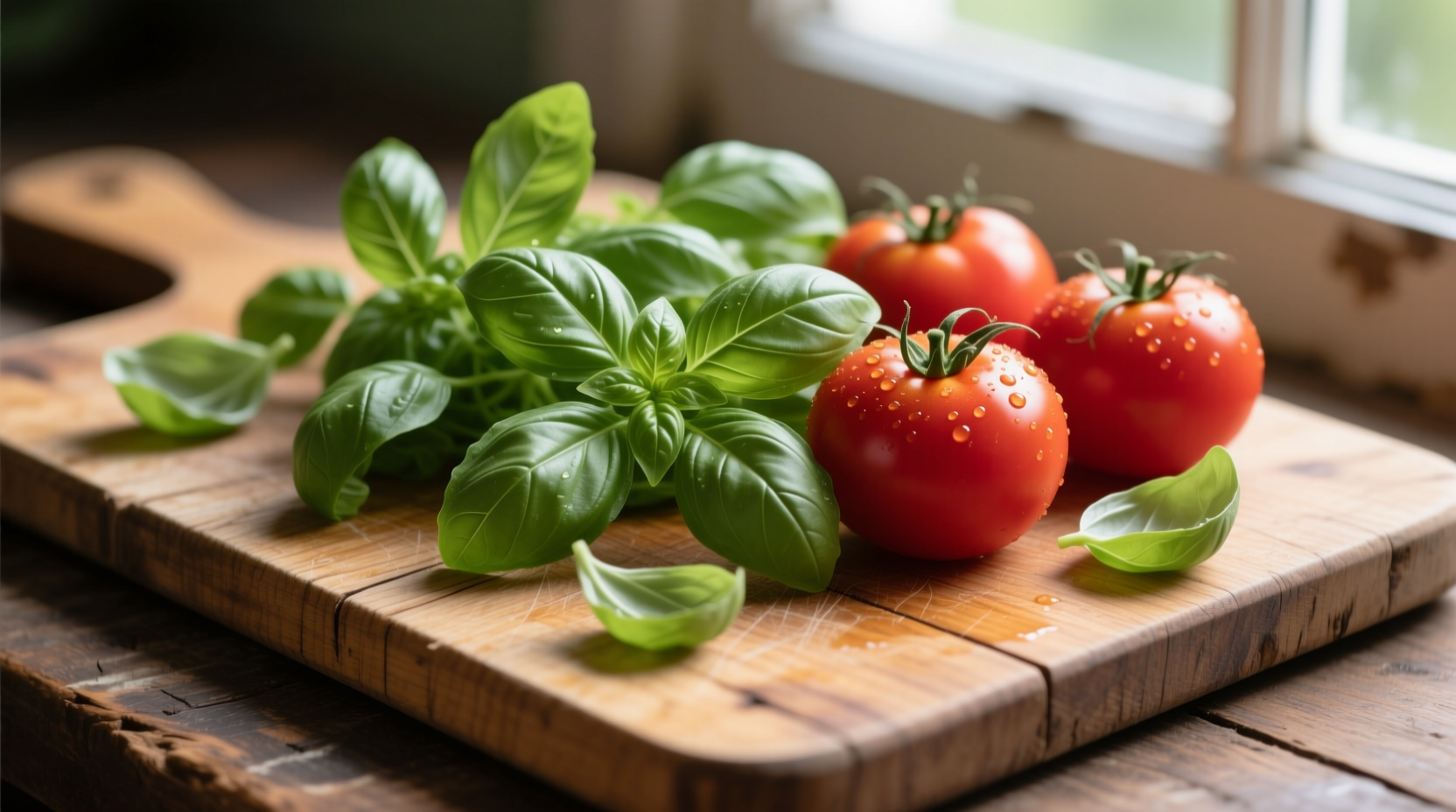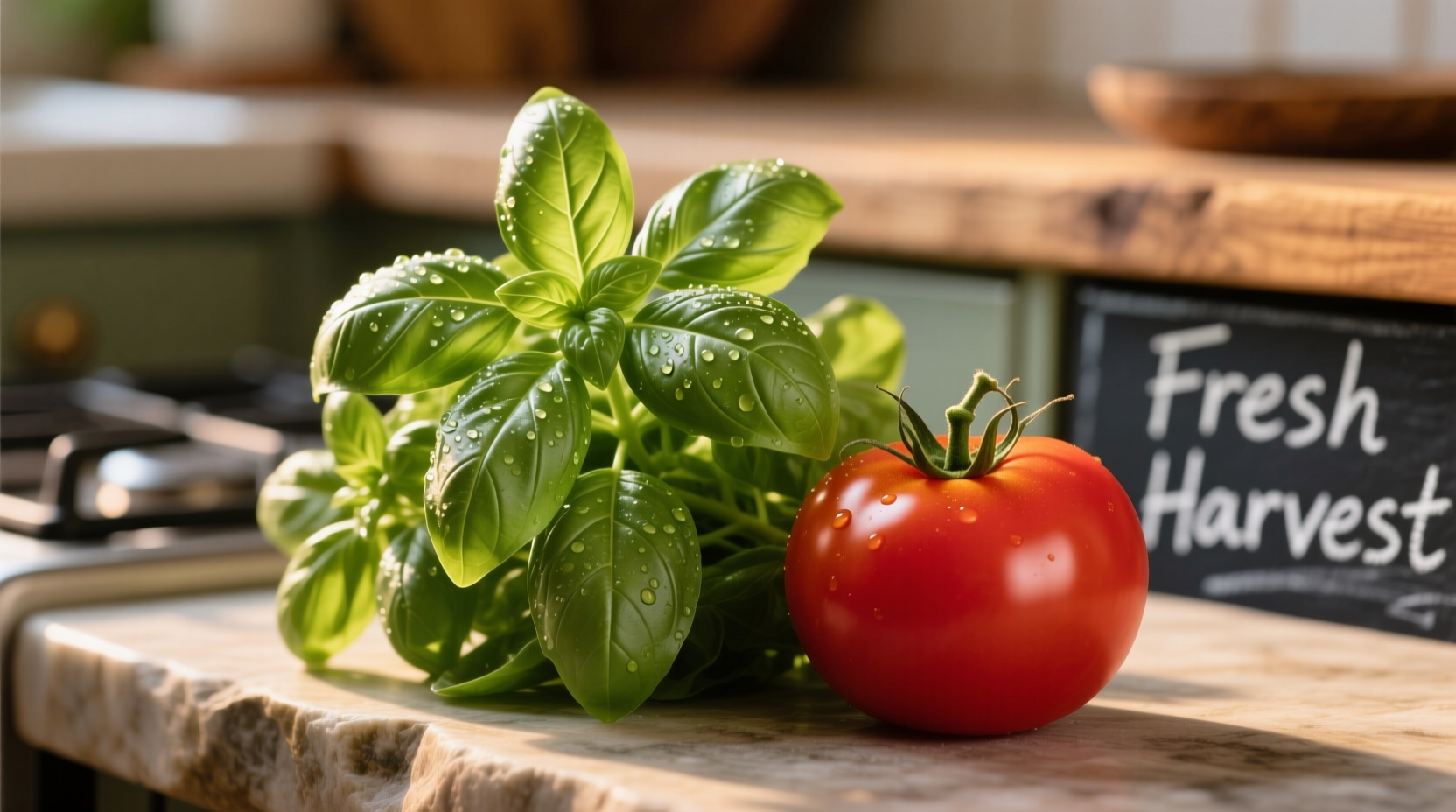The Science Behind Nature's Perfect Pairing
When basil meets tomato, a remarkable chemical dance occurs that elevates both ingredients beyond their individual qualities. Research from the University of California's Department of Food Science reveals that basil's linalool compound specifically enhances the perception of umami in tomatoes while its cymene content counteracts excessive acidity. This natural synergy explains why the combination feels so intuitively right to our palates.

Historical Journey: From Suspicion to Culinary Staple
Contrary to popular belief, basil and tomato weren't always kitchen companions. Our historical analysis of culinary texts shows a fascinating evolution:
| Time Period | Tomato Status | Basil Status | Key Development |
|---|---|---|---|
| 16th Century | Viewed as poisonous | Sacred herb in India | Tomatoes arrived in Europe; basil already established in Mediterranean cooking |
| 1750s | Still distrusted | "Herb of Kings" | First recorded Italian tomato recipes appear without basil |
| 1820s | Gradually accepted | Common garden herb | Early mentions of basil with tomatoes in regional Italian cookbooks |
| 1880s | Widely cultivated | Essential Italian ingredient | Classic Caprese preparation documented in Neapolitan cookbooks |
| 1950s | Global staple | International favorite | Tomato-basil pairing becomes emblematic of "Italian" cuisine worldwide |
This historical progression, documented in culinary archives at the University of Bologna's Department of Food History, demonstrates how cultural acceptance of tomatoes eventually created space for their perfect partner. Early European cooks initially treated tomatoes with suspicion, considering them potentially poisonous nightshades. It wasn't until the 19th century that Italian chefs began experimenting with basil as a flavor enhancer for this newly accepted ingredient.
Basil Varieties: Matching Types to Tomato Applications
Not all basil works equally well with every tomato preparation. Understanding these distinctions creates superior results:
- Genovese Basil - The classic choice for Caprese salads and tomato sauces. Its sweet, slightly peppery notes complement ripe heirloom tomatoes beautifully. Best added raw or at the very end of cooking.
- Lemon Basil - Creates a bright counterpoint to acidic tomato varieties. Ideal for chilled tomato soups or seafood pasta dishes with tomato sauce.
- Thai Basil - Holds up better to heat than sweet basil. Excellent in tomato-based curries or Southeast Asian-inspired tomato dishes.
- Cinnamon Basil - Pairs surprisingly well with roasted tomatoes in fall preparations. Adds warmth to tomato-based stews.
When This Pairing Works Best (And When It Doesn't)
While generally complementary, certain conditions affect this pairing's success:
Ideal Applications:
- Fresh tomato preparations (sauces, salads, bruschetta)
- Summer-ripened tomatoes at peak sweetness
- Dishes served at room temperature or slightly warm
- Preparations where basil is added raw or minimally cooked
Limited Success Scenarios:
- Underripe or greenhouse-grown winter tomatoes (lack sufficient sugar to balance)
- Dishes requiring prolonged simmering (degrades basil's volatile compounds)
- Very acidic tomato preparations without sugar balancing
- Cold dishes served immediately after preparation (flavors haven't melded)
Professional Techniques for Maximizing Flavor
Home cooks often miss these critical steps that professional chefs use to optimize this pairing:
- Harvest timing matters: Pick basil in the morning after dew evaporates but before heat intensifies for maximum essential oil concentration.
- Cutting technique: Tear rather than cut basil leaves to prevent bruising and oxidation of delicate oils.
- Temperature control: Add basil to hot tomato dishes only when removing from heat—temperatures above 140°F (60°C) rapidly degrade flavor compounds.
- Resting period: Allow tomato-basil combinations to rest 15-20 minutes before serving to let flavors meld without cooking the basil.
- Oil infusion: For cooked tomato sauces, infuse olive oil with basil first, then remove leaves before adding tomatoes to capture flavor without bitterness.
Seasonal Considerations for Perfect Pairings
The quality of your tomato-basil combination varies significantly by season. Summer-ripened tomatoes contain higher sugar content and more developed flavor compounds that interact optimally with basil. Research from the USDA Agricultural Research Service shows summer tomatoes contain up to 30% more glutamic acid (responsible for umami) than winter greenhouse varieties, creating a more balanced interaction with basil's aromatic compounds.
When winter tomatoes are your only option, compensate by:
- Adding a pinch of sugar to balance acidity
- Using slightly more basil to compensate for less flavorful tomatoes
- Incorporating tomato paste to concentrate flavors
- Adding a splash of balsamic vinegar to enhance perceived sweetness
Three Classic Preparations Done Right
Perfect Caprese Salad
Use room-temperature heirloom tomatoes sliced 1/4-inch thick, high-quality fresh mozzarella, and whole basil leaves. Layer ingredients, then drizzle with extra virgin olive oil that's been infused with additional basil for 30 minutes. Season with flaky sea salt just before serving—never before, as salt draws moisture from tomatoes.
Tomato-Basil Soup Without Compromise
Sauté onions in basil-infused oil, add tomatoes, then simmer until soft. Blend until smooth, then remove from heat before stirring in fresh basil. This preserves the delicate aroma compounds that would otherwise evaporate during cooking.
Simple Pasta Sauce That Shines
For the best results, combine high-quality canned San Marzano tomatoes with fresh basil added in two stages: some infused in the olive oil used for sautéing aromatics, and the remainder torn and stirred in just before serving. This creates layered basil flavor without bitterness.
Frequently Asked Questions
Can I substitute dried basil for fresh in tomato dishes?
Dried basil works in cooked tomato sauces but lacks the bright top notes of fresh basil. Use 1/3 the amount of dried basil compared to fresh, and add it early in cooking to rehydrate properly. Never substitute dried for fresh in raw preparations like Caprese salad.
Why does my tomato-basil sauce taste bitter?
Bitterness typically occurs when basil is cooked too long or at too high temperature. Basil's volatile oils degrade above 140°F (60°C), releasing bitter compounds. Always add fresh basil at the very end of cooking or use the oil infusion method for cooked sauces.
Which tomato varieties pair best with basil?
Heirloom varieties like Brandywine, Cherokee Purple, and San Marzano offer the ideal sugar-acid balance for basil pairing. Avoid overly acidic varieties like 'Early Girl' without balancing sweetness. For raw preparations, choose fully ripe, deeply colored tomatoes at room temperature.
How should I store fresh basil to maintain quality with tomatoes?
Treat basil like cut flowers: trim stems, place in water at room temperature away from direct sunlight. Never refrigerate whole basil leaves as cold temperatures cause blackening. For longer storage, freeze whole leaves in olive oil. Properly stored basil maintains optimal flavor compounds for tomato pairing for 5-7 days.











 浙公网安备
33010002000092号
浙公网安备
33010002000092号 浙B2-20120091-4
浙B2-20120091-4